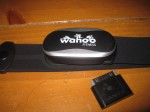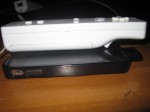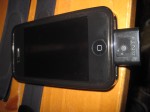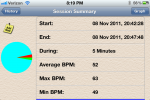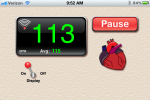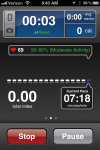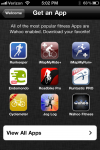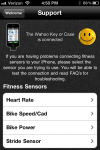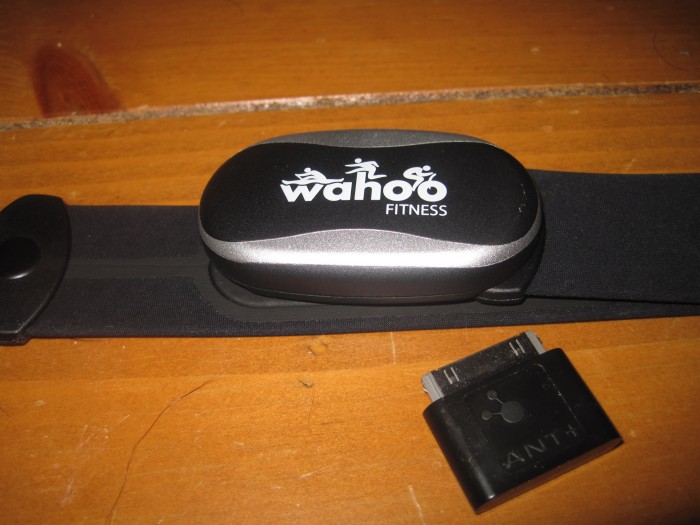
There are a few schools of thought in fitness when it comes to heart rate monitors. One side says that a heart rate monitor helps you keep your effort in the proper range, while the contrarians think a heart rate monitor is a crutch and you should go with what feels right, not a number on a screen. I’ve never trained with any sort of heart rate monitor, so when Wahoo offered Gear Diary the chance to review it, I jumped at the opportunity.
The Wahoo system comes with two parts, a heart rate monitor strap, and an ANT+ receiver. The strap goes around your chest, and the receiver plugs into the dock connector on the iPhone. Once the receiver is all set and you’re wearing the strap you’re good to go! Wahoo offers a utility to make sure everything is communicating properly and to assist with troubleshooting. The utility app also lets you browse for Wahoo-compatible apps, from running to biking and hiking. I love that they did this since it makes it much easier to find the apps you want. Typing Wahoo into the App Store search bar is a bit more hit and miss. 😉 One thing that bugs me about the receiver/strap combo is that there’s no carrying case or snap-together option for storage. While you can buy replacement ANT+ keys, it’s a pain to lose half the system, and the receiver is small enough that it could be misplaced, swept under a desk, etc. You can always keep the plastic packaging to store both parts, and the whole system is small enough to live in a small pouch, but some sort of storage system out of the box would have been nice.

I tested the Wahoo with three of its compatible apps; HeartWorks, WahooFitness, and Runkeeper. All three worked well with the receiver and strap, and I did not have any dropped connections or issues with the strap getting a read. Each app picked up the heart rate monitor right away, and as far as I could tell they were all fairly accurate. Where they differed was in how they handled the heart rate monitor’s feedback.
Wahoo Fitness app: This one handled the heart rate monitor data like a champ. Not only did it show my heart rate during the activity, but it also saved my average and max heart rate as part of the workout history, and calculated a rough calorie burn from my heart rate, speed and time. My one issue is that the app “counts down” when it starts, and if you turn the screen off during the countdown it doesn’t continue recording. Whoops.
Runkeeper: This is a great app for tracking runs, and it does show your heart rate DURING the run, but that data disappears into the void when you go back into your run history. For some reason, Runkeeper doesn’t save your heart rate information, so unless you’re checking the app regularly WHILE running you don’t get the benefit of knowing your average and max rates.
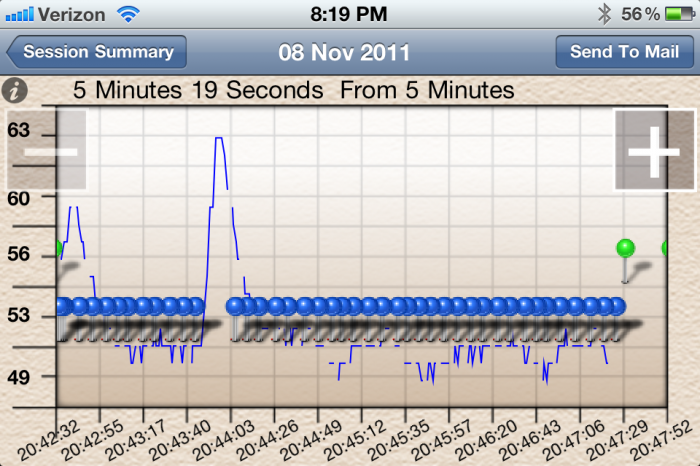
HeartWorks: If all you want to know is your average heart rate while active and resting, this is as straightforward as you get. There’s a tab that gives you history (and timeframe of the reading) along with fun charts that show the peaks and valleys of your heartbeat. It doesn’t run in the background, however, so if you’re looking for a long-term readout of your heart rate this isn’t it. As a check-in, though, it beats slapping your neck or wrist looking for a pulse and trying to count. I used this to figure out the accuracy of the heart rate monitor, and it fits with readings I have received before. My resting heart rate hovers in the low 50s, and HeartWorks showed the same results while sitting on the couch resting.
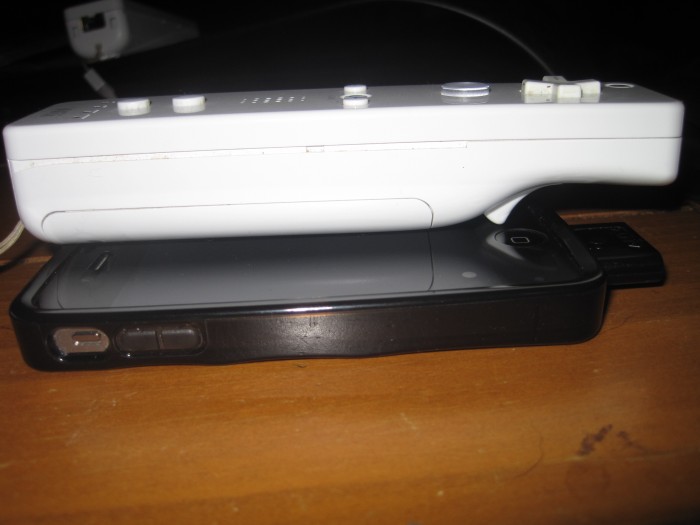
(as you can see, the iPhone is almost as long as a Wii remote with the ANT+ receiver attached)
As I said above, the ANT+ receiver plugs into the dock connector on the iPhone. It’s a fairly big receiver, around the size of a quarter, and it really extends the length of the phone. If you run with an armband that doesn’t have a dock opening you’ll need to stick your phone in upside down. Also, while the receiver is solid, I felt a bit uncertain running with my phone in my SPIbelt with it attached. The extra length combined with the potentially breakable piece is a major weak point in an otherwise solidly built phone.
The strap is very nice. It’s stretchy but soft and has adjustable clasps so you don’t cut off your breathing. The brains of the monitor snap into the strap securely, and once it’s on you it’s not budging. It’s important that you wet the pads on the strap for the best connection, and I found that a quick drop of water spread on each worked fine. This is battery-powered, and you can pop the battery door off with a screwdriver or coin.
This next section is for LADIES ONLY:
If you’re a woman, there’s one other piece to wearing a heart rate monitor, and that’s peaceful coexistence with your sports bra. I found that I had to adjust the heart rate strap under my sports bra just so, otherwise it was a bit uncomfortable. Not all of them had this problem, but a few did. And if you can’t get around it…well, I recommend keeping some body glide handy, unless you want to explain some interesting hickey-like marks where the strap and bra collided to your significant other.
/End ladies only section. Welcome back, gentlemen.
I like the Wahoo strap in concept more than in reality, but that’s just me. While I get a kick out of seeing the data, it’s a novelty more than a useful tool. Part of this is that I don’t wear headphones while I run, so any audible feedback on my heart rate gets muted by my pockets. But it’s also that heart rate is just one piece of the endurance puzzle, along with data like splits, miles per week, etc. If you are following a particular strategy that requires you to track your heart rate during activities (like the Maffetone Method) and you can live with Wahoo’s fitness app, or your app of choice plays better with heart rate data than Runkeeper, it’s a great add-on. However, adding in the extra step of fishing out your phone to check your heart rate can be a pain, or you have to be ok with voices booming at you at set intervals declaring your time/heart rate/pace. That’s an individual choice, but if this does appeal to how you train, I can say the Wahoo system is extremely well-built and designed, stands up well to endurance training, and has a wealth of apps and other accessories (including bike cadence sensors, stride sensors, cases, and mounts). Wahoo does a great job leveraging the iPhone ecosystem and providing a full range of products for biking and running, and if you’re carrying your phone while working out anyway it makes a very handy add-on.
MSRP: $119 from Wahoo
What I Like: Well constructed equipment; Lots of app options; Accurate readout; Affordable way to use a heart rate monitor
What Needs Improvement: Not all apps integrate well with the monitor; Receiver sticks out far from the phone; Feedback on heart rate requires direct interaction with the phone

